I am getting this message in the console every time I navigate to another screen:
[Assert] displayModeButtonItem is internally managed and not exposed for DoubleColumn style. Returning an empty, disconnected UIBarButtonItem to fulfill the non-null contract.
Currently I have navigation view set up in the entry point of the app like so
NavigationView {
KeyboardView(matrixVM: matrixVM, isNavigationBarHidden: $isNavigationBarHidden)
.background(Color("background")
.edgesIgnoringSafeArea(.all))
.navigationBarTitle("Workspace")
.navigationBarHidden(self.isNavigationBarHidden)
.onAppear {
self.isNavigationBarHidden = true
}
}
And then inside the KeyboardView I have the navigationlink
NavigationLink(destination: NotebookView(isNavigationBarHidden: $isNavigationBarHidden, saved: matrixVM), label: {
Text("Notebooks")
.font(.system(size: 14, design: .rounded))
.fontWeight(.medium)
.foregroundColor(Color("text"))
.padding(.trailing, 10)
})
Inside the NotebookView I have a list of navigation links (each notebook linking to its detail page)
ScrollView(showsIndicators: false) {
ForEach(notebooks, id: \.self) { notebook in
NavigationLink(destination: ExpandedSnippet(matrixVM: saved ,notebook: notebook)
.navigationBarTitle("Notebook", displayMode: .inline)) {
SnippetCard(notebook: notebook, matrixVM: saved)
.frame(width: UIScreen.main.bounds.width)
}
.padding(.bottom, 30)
}
}
Everything seems to be working but just a few hours ago it didn't (I was using tabbar and it suddenly started crashing after working for weeks). I feel like it's a bit of a mess and I am doing something wrong. Any idea why? Thanks for the help!

